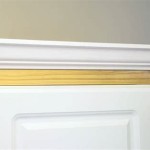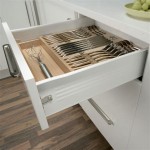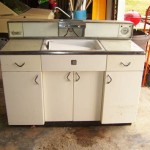How To Stop Kitchen Cupboards Smelling
Kitchen cupboards, despite their function of storing food and cookware, can sometimes develop unpleasant odors. Various factors contribute to this, including trapped moisture, food spills, and the absorption of strong aromas from stored items. Addressing these issues requires a multi-pronged approach focusing on cleaning, absorbing existing odors, and preventing future smells.
The first step in eliminating cupboard odors is a thorough cleaning. Empty the cupboards completely, removing all food items, cookware, and liners. Wipe down all surfaces with a solution of warm water and dish soap. Pay particular attention to corners, crevices, and any areas with visible spills or residue. For stubborn grime, a mixture of baking soda and water can be used as a gentle abrasive cleaner. Rinse all surfaces thoroughly with clean water and allow them to dry completely before replacing any items.
After cleaning, lingering odors may persist. Several methods can be employed to absorb these smells. Activated charcoal is a highly porous material known for its odor-absorbing properties. Placing small bowls or sachets of activated charcoal inside the cupboards can effectively neutralize unwanted smells. Baking soda is another readily available option. An open box or bowl of baking soda placed inside the cupboard can absorb odors over time. Similarly, white vinegar can be used. A small bowl of vinegar left in the cupboard overnight can help eliminate musty smells. It is important to replace these odor absorbers regularly for continued effectiveness.
Preventing future odors is crucial for maintaining a fresh-smelling kitchen. Proper food storage plays a vital role. Ensure all food items are stored in airtight containers to prevent the release of aromas and the attraction of pests. Regularly check for expired or spoiled food and discard it promptly. Spills should be cleaned up immediately to prevent them from seeping into cupboard surfaces and causing lingering odors. Avoid overcrowding cupboards, as this can restrict airflow and trap moisture, contributing to odor development.
Maintaining proper ventilation within the cupboards is also essential. Avoid completely sealing cupboards for extended periods, as this can trap moisture and promote the growth of mold and mildew. Leaving cupboard doors slightly ajar for a few hours each week can improve airflow and reduce moisture buildup. Consider installing small vents in the cupboard doors or back panels to facilitate continuous air circulation.
Certain materials can be used to line cupboard shelves and drawers, providing an extra layer of protection against spills and odors. Shelf liners made of absorbent materials, such as cork or non-adhesive paper, can help absorb spills and prevent them from reaching the cupboard surfaces. These liners should be replaced regularly to maintain their effectiveness. Alternatively, washable shelf liners made of plastic or silicone can be used. These liners are easy to clean and can be wiped down regularly to prevent odor buildup.
Natural odor neutralizers can also be used to maintain a fresh scent within the cupboards. Dried herbs and spices, such as cloves, cinnamon sticks, or bay leaves, can be placed in small sachets or bowls inside the cupboards. These natural aromatics release pleasant fragrances that can mask unwanted odors. Coffee grounds are another effective natural odor absorber. Placing a small bowl of dry, unused coffee grounds in the cupboard can help neutralize unpleasant smells. Citrus peels, such as lemon or orange peels, can also be used to freshen up the cupboards. Simply place the peels inside the cupboard and replace them when they dry out.
Regular maintenance is key to preventing cupboard odors. Implementing a routine cleaning schedule, including emptying and wiping down the cupboards regularly, is essential. This will help prevent the buildup of grime, spills, and crumbs that can contribute to unpleasant smells. Inspecting food items regularly and discarding expired or spoiled food will also prevent the development of odors. By following these preventative measures, maintaining fresh-smelling kitchen cupboards can be a manageable and achievable task.
Addressing specific odor problems may require targeted solutions. For persistent musty smells, consider using a dehumidifier in the kitchen to reduce overall humidity levels. If the odor is emanating from a specific item, such as a wooden cutting board or utensil, thoroughly clean and dry the item before returning it to the cupboard. In cases of severe or persistent odors, consulting a professional cleaning service may be necessary.
Beyond the methods mentioned above, using commercial odor eliminators specifically designed for kitchens can provide additional odor-fighting power. These products often come in spray or gel form and can be applied directly to cupboard surfaces or placed inside the cupboards to neutralize odors. Following the manufacturer's instructions is crucial when using these products.

25 Simple Ways To Keep Your Kitchen Smelling Clean And Fresh

Musty Smell In Kitchen Cabinets Cupboards Causes Solutions

Musty Smell In Kitchen Cabinets Cupboards Causes Solutions

17 Tips Tricks To Keep Your Kitchen Smelling Fresh What Mommy Does

25 Simple Ways To Keep Your Kitchen Smelling Clean And Fresh

Tips To Keep Your Kitchen Drawer Smelling Fresh Get Set Clean

How To Get Rid Of The Smell In My New Cabinets Ehow

7 Easy Tips For Getting Rid Of Musty Smells

This Tiktok Will Make Your Cabinets Smell Better With Only Two Items

Getting Rid Of The Musty Old Smell From Your Cabinets N Hance Wood Refinishing Franklin Murfreesboro
Related Posts








